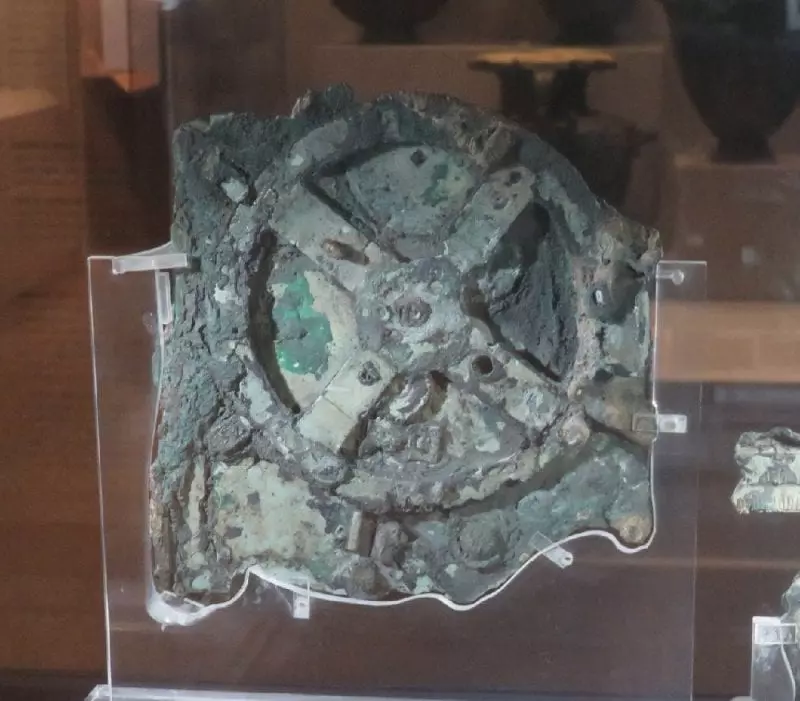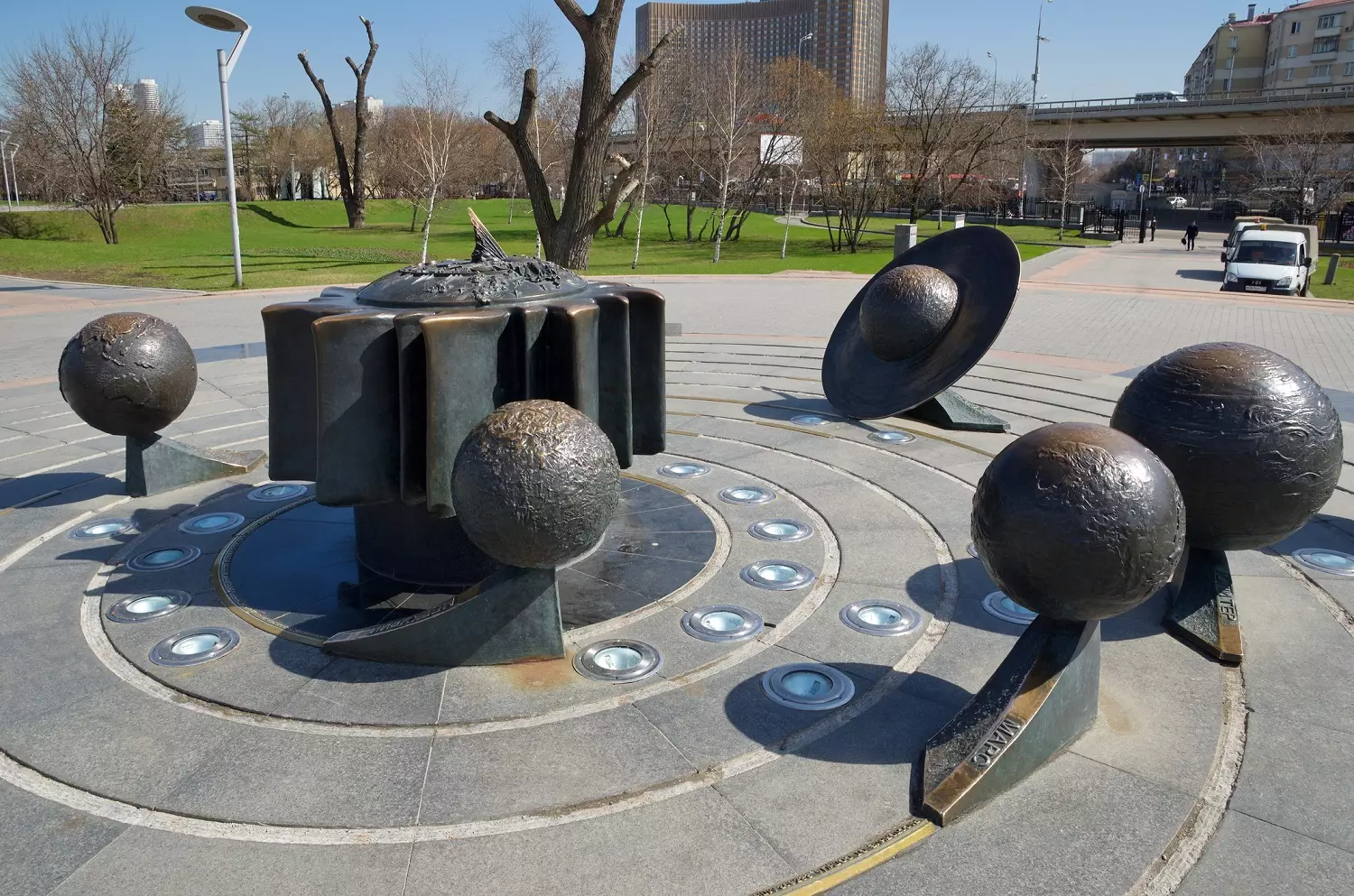[Originally published as What is the creation model?]
In the spring of 1900, a crew of sponge divers returning to their home in the Greek isles happened to take shelter from a storm off the northeastern coast of the tiny island of Antikythera. After the storm, the divers decided to explore the seafloor beneath them in hopes of finding sponges in the unexplored waters. They found instead one of the richest and most celebrated shipwrecks from ancient Greece.
Their initial explorations retrieved a bronze arm dislodged from a statue, and subsequent explorations brought to the surface many celebrated statues of bronze and marble. Along with these artworks came many small fragments of encrusted bronze that were thought to be broken statue pieces that could be used in their reconstruction. Explorations led by Jacques Cousteau more than 75 years later would uncover coins from the wreck dated to the mid-first century before Christ. The wreckage and its artifacts are more than 2,000 years old.
Two years after the wreck’s discovery, in May of 1902, workers at the National Archaeological Museum in Athens happened upon one of the extra bits of corroded bronze and noticed that it bore an inscription and what appeared to be wheels. This strange set of fragments has come to be known as the “Antikythera Mechanism.” Early opinions on the meaning of the device were split between those who believed it was an astrolabe, a relatively simple instrument used to measure the altitude of an astronomical object above the horizon, and those who believed it must have been something far more sophisticated.
Subsequent research revealed that the Antikythera Mechanism was an elaborate, geared, mechanical computer used to calculate the position of the planets in the sky, the relationship between the lunar phases and the solar year, and even the timing of eclipses. The sophistication of the Mechanism is unprecedented for its time, so much so that a few individuals have speculated that it is not actually as old as the shipwreck. Nevertheless, the mathematical details of the geocentric universe it models place it firmly in the world of ancient Greek astronomy.
More than 1300 years after that Mechanism was lost off the coast of Antikythera, two other famous astronomical clocks would capture the attention of western Europe. In England, Richard of Wallingford invented a device that would tell the time, the motions of the sun and moon, and the tides. In the city of Padua, now in northern Italy, Giovanni de Dondi took sixteen years to construct a similar clock that tracked the motion of the planets.
So celebrated were these devices that the picture of the universe as a grand clock became ingrained in the European imagination. In the four centuries following the invention of these two clocks, the laws of planetary motion and gravity were worked out by Kepler and Newton, all of which reinforced the regularity of the universe, but the idea of a clockwork cosmos has its roots in the Middle Ages with these clocks.
Despite the centuries separating their invention, the Antikythera Mechanism and these medieval clocks both attempt the same sort of thing.
They’re all models, in this case miniature devices that represent something much bigger. Models can be very simple and representational, like statues or paintings, where only superficial details are captured and displayed. Models like these geared computers attempt to depict more complicated features of motion and time.
They are, in modern parlance, scientific models.
The Antikythera Mechanism was made of bronze and wood, but modern scientific models are most often purely theoretical. They exist in the world of mathematics, computer software, and the written words of scientists. Though theoretical, they are no less compelling and powerful than the physical clocks. You likely interact with and rely on scientific models on a regular basis, even if you don’t know it. Scientific models are behind weather forecasts, medical decisions, and just about any piece of technology you encounter.
The object of a scientific model is to capture details of the world around us. Scientific models are built on observations and the regularities of God’s creation. Models go beyond just scientific laws.
For example, the law of gravity states that the force of attraction between two bodies is directly proportional to the product of their masses and inversely to the square of the distance between them. Sounds interesting, doesn’t it? The whole reason people get excited about the law of gravity is what it allows us to do: We can combine the law of gravity with observations of planetary motion to make a model—an actual representation of the solar system that is so accurate the positions of planets in the future could be predicted.
All scientific models work in the same way, combining observations and regularities (laws) into representations of reality.
Scientific models can be good or bad, depending on the details of the model, but “good” and “bad” models all depend on what you expect from them. Even incorrect models can accurately account for observations. The Antikythera Mechanism poorly represents what we know about the cosmos, since it places the sun in orbit around the earth, but it nevertheless calculated calendars and lunar phases with decent accuracy.
Oddly enough, even “wrong” models can be accurate.
Creation as a Model
The creation model as I understand it is a scientific model built with two types of data, information obtained from observing God’s creation and information obtained from studying God’s revelation. The creation model synthesizes everything into a grand representation of God’s handiwork. In a sense, the creation model is a kind of sermon or hymn, something that we compose or articulate in response to God’s nature or work in our lives. We see what God has done, and we want to both understand it and to proclaim that work to others.
That’s why we creation scientists make models. We’re motivated to discover the works of God. We thrill to new discoveries, and we continually tinker with our understanding and improve various parts of our models. Over time, our models get better at depicting God’s creation.
One hundred years ago, there were only a handful of creationists actively interested in questions of science and origins. Self-taught geologist George McCready Price taught that the fossil record was actually a random jumble of layers, where you could find any layer on top of any other layer. Today, our Flood geology models explain fine details of rock formation as well as incorporating the larger evidences of continental movement.
We’ve come a long way.
Still, scientific models are never done, not in this lifetime anyway. Just like we don’t always understand God’s working in our lives, so too we don’t always understand the details of God’s creation.
- How did the fossil record come to be ordered in the way it is?
- How can we see stars so far away?
- Who were the Neanderthals?
There are many more questions to be answered and even more of creation to be explored.
We’ve come a long way since the Antikythera Mechanism was crafted. Where will we go tomorrow? And perhaps more importantly, how can you be involved in the proclamation of God’s great and mighty works?
- Here are a few suggestions:1. Pray. Ask God to bless those involved in this work and the students working to become involved.
2. Give. Consider a financial contribution to my student scholarship fund and other creation ministries.
3. Recruit. Know someone with a curious mind and a knack for science? They might just be tomorrow’s creation science leader. Encourage them to become involved.
4. Contribute. Maybe you have your own ability and a good scientific background, but you’re just wondering how to get involved. I recommend reading my book The Quest for some good ideas on open questions.
Models are wonderful things, and I have been blessed to be a part of modeling God’s creation. Now, I have the privilege of encouraging others to join this work. I hope you’ll come along for this grandest of adventures, as we together explore God’s creation.







